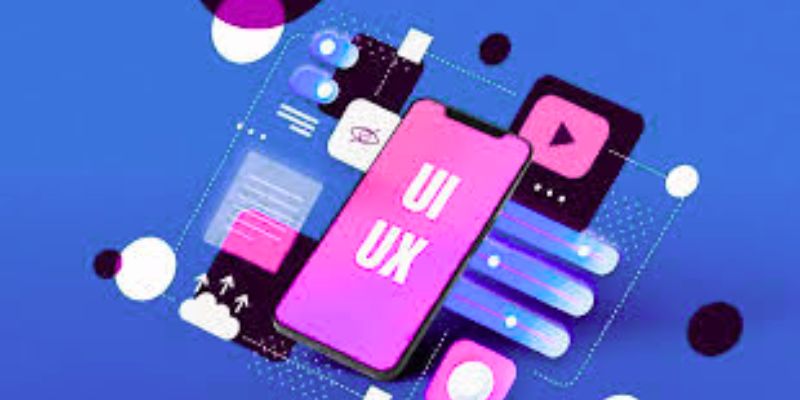Most individuals interchange the concept of UI (User Interface) Design and Graphic Design and often consider them as a replacement of each other. Although the two disciplines revolve around aesthetics and visual communication, the two are distinct in the sense that they have different uses and call on different types of skills. Regardless of whether you are designing a career or just want to increase your knowledge against this difference, the post in this blog unravels the differences well. Taking a well-organized UI UX Designer Course in Chennai will allow you to get practical advice on these two spheres and will allow you to realize where your interests coincide. Now, we shall review in detail the difference between the UI Design and Graphic Design in terms of the goals, tools, skills and user influence.
1. Purpose and End Goals
UI Design
UI Design is concerned with the design of a user-friendly and interactive interface of the digital product (a website, a mobile application, and a software). It seeks to enhance user experience since the navigation has to be smooth, and also the visual interface should be in line with consumer expectations.
Graphic Design
Graphic design revolves around brand and visual narration. It entails designing graphics in multimedia formats e.g. internet, and print e.g. posters, logos, brochures, banners, and packaging. It has its purpose that is to express ideas pictorially, usually in motionless form.
2. User Interaction vs. Visual Messaging
UI Design is interacting in nature. Designers have to consider how people would navigate through a system, press buttons and comprehend icons or menus. It is not only about having good looks but it is also about being able to work well. Graphic Design is more about the one-way communication. Be it an advertisement or a magazine layout, it is all about a visual message that is to be conveyed, and quite frequently one that needs no interaction whatsoever.
3. Tools Used
Although these two related fields use some of the same tools, UI Designers tend to utilize:
- Figma
- Adobe XD
- Sketch
- InVision
Graphic Designers however, are more supported by:
- Adobe Photoshop
- Adobe Illustrator
- CorelDRAW
- InDesign
The tools mirror their functions UI tools: those are biased towards wireframing, prototyping and interactivity; graphic tools: those are biased towards illustration, image editing and layout.
4. Layout and Structure
UI Designers should take into account how the whole interface contains navigation bars, forms, icons, responsiveness on different devices, etc. Their design is normally grid and cross-platform. Graphic Designers pay attention to creativity. Although structure can be important, in publications or in branding, there is more scope to go off-grid and experiment with non-linear formats. Be it screen or print, you like to design either way, with a specialized Graphic Design Courses in Chennai, you can master the art, create a great portfolio and cut your niche in the design field.
5. Typography and Color Usage
Typography and color theory apply in both fields of design but to different ends. UI Designers opt between typographies based on their readability on different screens and contrasts on accessibility. Graphic Designers may be more interested in the emotional connection of a font or a color and strive to create brand consistency and visual impression.
6. Deliverables
UI Designers produce:
- Wireframes
- Prototypes
- User flows
- Style guides for development
Graphic Designers create:
- Logos
- Social media graphics
- Brochures
- Marketing collateral
The result of the work of UI Designer is usually passed along to developers, whereas the work of Graphic Design is mostly the final product.
7. Collaboration and Workflow
UI Designers are in liaison with UX Designers and Developers. They work together to have functionality and aesthetics to converge. It is not uncommon to have feedback cycles and designs can be iterated by testing it with users. Graphic Designers usually work together with marketing groups, art directors and the client. The process involves conceptual brainstorming, draft and final artwork.
8. Metrics for Success
Success of UI Design is gauged based on usability testing, rate of clicks and user satisfaction. In case users can quickly fulfil tasks, the UI works. The Graphic Design success is measured by brand recognition, engagement and visual appeal. The win is when the audience recalls the advertisement or connects to the company.
9. Job Roles and Career Paths
UI Design Roles:
- UI Designer
- Product Designer
- Mobile Interface Designer
Graphic Design Roles:
- Graphic Designer
- Brand Identity Designer
- Print Designer
Some professionals eventually branch into both fields, becoming multidisciplinary designers.
10. Learning Paths and Skill Building
UI Design requires knowledge of:
- Design systems
- Interaction design
- Accessibility guidelines
- Responsive design principles
Graphic Design requires strength in:
- Visual storytelling
- Composition and layout
- Branding principles
- Illustration skills
The selection of a field is based on whether you like technical interactivity (UI), or non-interactive aesthetic expression (Graphic Design). In both situations, the gap between theory and practice can be closed with the help of completing a structured Digital Marketing Courses in Chennai with design projects. In conclusion, both UI Design and Graphic Design might be using the same visual language but they are addressing different people with different intentions. UI Design is communicative and interactive, and Graphic Design expressive and communicative. To make your choice of a creative path, the first step is to understand their particular roles.

